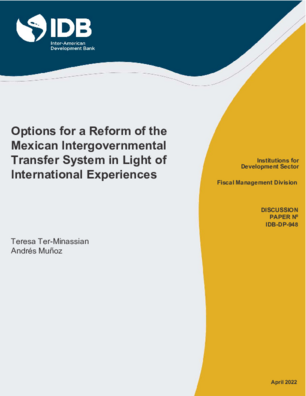Options for a Reform of the Mexican Intergovernmental Transfer System in Light of International Experiences
Date
Apr 2022
This paper focuses on the design of intergovernmental transfers to reduce vertical and horizontal fiscal imbalances and improve the performance of subnational governments. It provides an overview of international experiences, especially of large federations, with a view to devising viable options for reform of the transfer system in Mexico. While there is no one-size-fits-all ideal model of design and implementation of intergovernmental transfer systems, this analysis points to some lessons that can inform reforms, including the need to view intergovernmental transfers as an integral part of the overall system of intergovernmental fiscal relations; the use of different types of intergovernmental transfers that are best suited to fulfill different objectives; and the incorporation of equalization schemes to address regional disparities. In the light of these experiences, we find that the current Mexican transfer system is too fragmented, is linked to volatile oil revenues, involves substantial discretion in the allocation of a significant portion of the transfers, and lacks sufficient equalizing power. This paper presents and discusses possible reform options and demonstrates that it is altogether possible to reduce transfer dependence to promote effort and fiscal responsibility; simplify the system to increase predictability and ease its administration; eliminate discretion to increase transparency and establish stronger subnational budget constraints; and improve fiscal equalization to promote equity in subnational service delivery. Careful consideration of political economy dynamics is given in the simulations of possible reforms, with a view to minimizing short-term gains and losses as well as political opposition.




